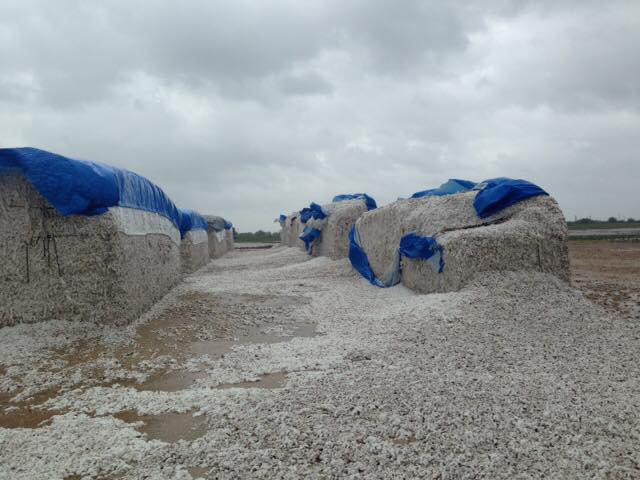A recent analysis reveals how Hurricane Irma treated Georgia cotton.

Hurricane Irma blew into Florida Sept. 11 and moved rapidly north into Georgia cotton country with tropical storm strength, knocking lint to the ground and twisting and beating up fields.
“To varying degrees, it is safe to say that every cotton field in Georgia has been negatively impacted by Irma,” said Jared Whitaker, University of Georgia Extension cotton specialist, in an interview Sept. 19.
A preliminary investigation by Whitaker and UGA Extension agents collecting samples in cotton-growing counties shows Irma alone will conservatively cost Georgia about 10 percent of its potential production this year. If preliminary observations and estimates hold true, Georgia cotton farmer face a loss of $100 million in potential production just from Irma this year.
Irma brought steady 40 mph winds with 50-plus-mph gusts to Georgia cotton for many hours. Samples submitted to Whitaker by county agents from cotton regions of the state indicate 120 pounds per acre of lint to 700 pounds per acre of lint were lost in fields. He said samples from fields ready or near-ready for harvest show an average loss of 300 pounds of lint per acre.
It is a wait-and-see situation. Time will focus the picture better on how much was lost, but Whitaker said losses could go higher, depending on how well mangled plants straighten back out over the next few weeks and how well growers can effectively access and manage fields.
“Much of the cotton I have seen has been blown over and wrapped together and that will cause issues for spraying and harvesting for the rest of the season,” he said.
If Irma had come two weeks later, he said, the crop would have been further along in development with more open bolls, and the losses would have been much greater.
Like many Southeast cotton farmers, Georgia farmers need pleasant weather the remainder of this growing season, and they need good yields this year to counter what has been multiple years of suppressed market prices coupled with costly production inputs.
On Sept. 20, Hurricane Maria with category-5 strength was devastating Caribbean islands and Puerto Rico, a region in which Hurricane Irma brought deadly destruction just two weeks prior. But it appeared Maria, unlike Irma, was going to steer sharply northward and avoid hitting at least directly the Southeastern United States.
Whitaker said a cotton plant that is just beginning to open bolls is the heaviest it will be throughout its life. As opening proceeds and the cotton plant nears ready for harvest, it gets lighter and this biological process can help a pushed down plant stand back up. But plants pushed to the ground will likely not rebound, and either way boll rot will be a major concern as the end of the season nears.
In the last month, tropical storm weather has hit the top two cotton-producing regions of the United States. Hurricane Harvey in August hit along the Texas coast where cotton harvest was winding down, but not before the storm claimed a 300,000 to 500,000 bales of cotton, according to estimates soon after the storm, which left cotton gins and infrastructure damaged, too.
Whitaker said UGA Extension agents are ready to help cotton farmers who have been impacted by Irma estimate their damage, and the agents are ready to provide recommendations to see this crop through to harvest.
Πηγή: Southeast Farmpress

